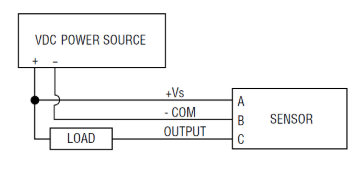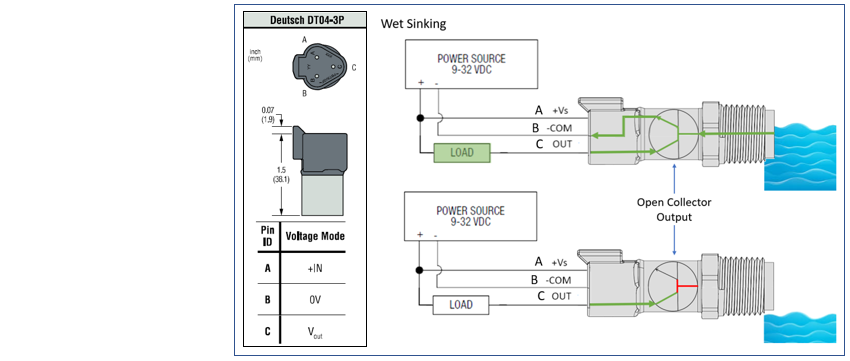What is a sinking output?

In a sinking configuration, current passes through the load first, through the output switch of the sensor second and lastly to ground. It is a transistor logic output that switches the DC ground (or negative) leg of the circuit
Do I want a sinking output for my sensor?
If you do not want to see the voltage (0V) and only want the transistor logic on the output wire, you want sinking, because voltage sinks to ground.
A common application for a sinking output sensor is to connect to a PLC with a sourcing input card.

OK, looks like sinking is for me. Now how do I choose wet or dry sink?
Imagine your sensor is connected to a light bulb. Do you want the light bulb to turn on when the unit is wet, or when it is dry?

Dry sink = “When dry, light is on.” Sinks the voltage when dry, voltage is 0, transistor logic output
Wet sink = “When wet, light is on.” Sinks the voltage when wet, voltage is 0, transistor logic output
Some considerations:
If an NPN cable is damaged there is the chance the signal could short to ground and cause a false true signal, but there would be no damage to the circuit.
For inductive loads use diode suppression.
 SEARCH OUR RESOURCE CENTER
SEARCH OUR RESOURCE CENTER

